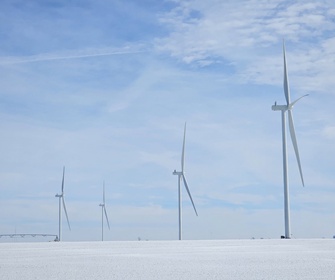A new study of how the performance of wind plants in the USA changes as they age found that output from the typical wind plant declines by about 13 percent over 17 years. Furthermore, plants of 10 years of age or less showed very little performance decline overall (-0.17 %/yr). The research, by Berkeley Lab, is based on data from 917 wind power projects in the US. It provides the first comprehensive evaluation of its kind for the USA.
A major influence on the performance of older plants (built before 2008) is the federal production tax credit, which provides incentives for energy output during the first 10 years of plant life. Plant performance declined abruptly after the 10 year tax credit ran out, suggesting that the tax credit gives plant operators strong incentives to maintain turbines.
The study finds that turbines sited on flatter terrain, with lower specific power and direct drives (rather than gear boxes) have lower rates of performance decline. Flatter terrain may be associated with less wind turbulence, and thus less stress on the turbines, but data on turbulence is not systematically available.
Factors that had no discernible effect on performance decline included overall project capacity, amount of nearby capacity at other wind plants, size of plant owner (i.e., owners of many projects versus owners of a single project), and original equipment manufacturer.
The performance of wind plants may decline over time due to a number of reasons, such as increasing downtime for maintenance, erosion of blade edges, or increased friction within rotating components. It is also possible for performance to improve if software, or even hardware, updates are installed. However, in most cases plant performance tends to decline slightly with age.
Despite its importance, little information is publicly available as to how U.S. wind plant performance changes with age. Due in part to the lack of information, the performance decline rate is often not accounted for by investors, energy modelers, and policy makers.








